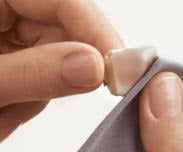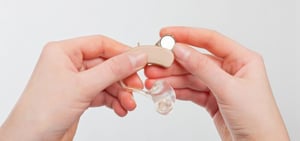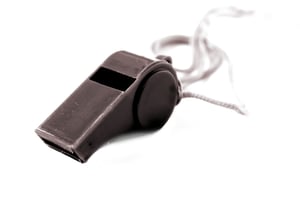Time to read: 8 minutes
Hearing aids are little technological marvels that work reliably in highly demanding environments.
And with regular cleaning and servicing, hearing aids can give you many years of trouble-free use. But even so, things can and do break down and need repair.
We outline some of the things which may go wrong with your hearing aids and what you can do when that occurs.
Moisture
 Moisture and electronics do not mix and yet hearing aids perform sterling service in and around our ears.
Moisture and electronics do not mix and yet hearing aids perform sterling service in and around our ears.
In summer, when the temperature and humidity rise, moisture becomes a real issue for hearing aids.
We recommend keeping a microfibre cloth with you to wipe over your aids during the day if you find yourself feeling sweaty and to use a D-Dry device at the end of the day to ensure your aids are moisture-free.
If you have disposable battery hearing aids, do leave the battery door open overnight to help keep your aids dry inside. A word of warning, be gentle with the battery door. Don’t wrench the back of your hearing aids open as the doors can break.
Taking a dip in the pool or in the ocean is very tempting on the hot summer days, but double check to make sure you’ve removed your hearing aids before taking a swim.
If your hearing aids aren’t working, moisture may very well be the cause and you should give Value Hearing a call as soon as possible. We will take a look at your hearing aid and see if moisture can be removed by our equipment in-clinic. However, it could very well be that your hearing aids need to be sent back to the manufacturer for a full repair.
More reading:
Wax Build Up
 Ear wax is perfectly natural. In fact it is one of the body’s defence measures.
Ear wax is perfectly natural. In fact it is one of the body’s defence measures.
Read more:
But if it builds up on your hearing aids, it blocks receivers and microphones will prevent sound coming into your ears or could make the sound distorted.
The good news is, this is an easy fix. Take out your hearing aids and give them a thorough clean over with the cleaning kit you will have received with your hearing aids.
More reading:
- How to Clean Your Hearing Aids: Receiver-In-Canal
- How to clean your hearing aids - custom hearing aids
- How To Clean Your Hearing Aids
Once you have given your hearing aids a general clean, it might be time to replace the wax filter. We have articles here on how to replace wax filters using the two most popular types of wax filters
More reading:
If you’ve tried all of these things and your hearing aids still aren’t working, then make an appointment to see us here at Value Hearing for a thorough clean and check of your aids.
Flat Batteries
 There is nothing more annoying than your hearing aids going dead while you’re in the middle of a busy day (or the middle of an exciting movie).
There is nothing more annoying than your hearing aids going dead while you’re in the middle of a busy day (or the middle of an exciting movie).
And there are a number of reasons why you are not getting the battery or charge life you might be expecting.
Let’s run through some of these:
Bluetooth and Streaming
Bluetooth connectivity and streaming sound directly to your hearing aids is one of the amazing new features found in modern hearing aids, but they do shorten battery life.
More reading:
Disposable batteries
Disposable batteries require particular handling to ensure you get the most from their charge.
Before inserting a fresh battery into your hearing aids, peel the sticker off and leave the battery to breathe for 5 minutes before inserting it in the aid. Recent research has shown doing this one thing could increase battery life by up to 20%!
Try not to touch the flat back of the batteries as the oil in your fingers could block the air holes. Air is vital for proper operation of a Zinc-Air battery.
 Store your batteries in a cool dry place – like in the back of a drawer or cupboard – keep it away from kitchens (including fridges), bathrooms and other wet areas in the house.
Store your batteries in a cool dry place – like in the back of a drawer or cupboard – keep it away from kitchens (including fridges), bathrooms and other wet areas in the house.
Make sure the expiry date is still valid – this is written at the back of the battery packet.
Don’t pull off the sticker from the battery until you are ready to use it. These batteries will run flat when you do that within about 3 to 6 weeks depending on battery size.
Once again, be gentle with the battery door. Don’t wrench the back of your hearing aids open as the doors can break and that is definitely an inconvenient issue that will require your aids to be sent away for repair.
More reading:
Rechargeable Hearing Aids
One of the most common issues we encounter is clients not charging their hearing aids for long enough, or not seating the hearing aids into the charging dock correctly.
It can take a little bit of practice to seat the hearing aids just so. Look for the instruction which came with your hearing aids to ensure you have this process correct.
Read more:
If your batteries are draining or going flat within a few hours or only lasting a couple of days let your audiologist know. Your hearing aids may need to be sent in for a service.
Hearing Aid Feedback
 This is an issue we’ve covered before but it is worth addressing once again because it is so annoying.
This is an issue we’ve covered before but it is worth addressing once again because it is so annoying.
Here are some questions to ask yourself to help troubleshoot this vexing issue:
- Is your hearing aid seated properly?
- Is something blocking the microphone?
- Is the BTE hearing aid tube split?
- Is earwax a problem?
- Is your ear mould seated properly?
- Is your hearing aid too loud?
If cleaning and replacing the wax filter does not solve the problem (along with adjusting the volume control), do give Value Hearing a call.
If the BTE hearing tube is split or has stretched out of shape, do bring it into the clinic for one of our team to replace for you.
Microphone doesn't work
If cleaning, replacing wax filters and batteries doesn’t work. It might be that your hearing aids microphone is broken.
If this is the case, your hearing aids will need to be sent away for repair.
For more information on troubleshooting your hearing aids, check out these articles:
- Troubleshooting hearing and hearing aids from home
- Troubleshooting hearing aids, a users quick guide
- Hearing Aid Troubleshooting
You might also find Value Hearing’s How To playlist on YouTube a useful resource.

